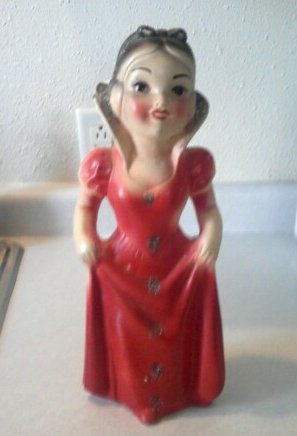In the 1920s through the 1940s, carnivals, state fairs, and the like gave away figurines made of plaster to those who successfully answered the calls of carnival game barkers. Because they were made of plaster or chalk, these pieces are called carnival chalkware. Given that they were made of a less-than sturdy material as well as given away to men trying to impress ladies and kids (both temporary conditions!), relatively few of the rather large number of plaster carnival prizes made and given away have survived; thus making them collectible.
The most popular of these pieces, then as now, are those depicting famous people, personalities, and icons of those times — including non-real folks, such as beloved comic and film characters. And not all of these were approved or licensed creations. Like my vintage Snow White carnival chalkware piece.
While characters such as Snow White and Cinderella (and their stories) are in the public domain, it’s pretty clear that the makers of vintage carnival chalkware pieces were ripping-off the intellectual property of Walt Disney.
Disney characters weren’t the only ones to be copied in plaster, but they seem to be among the most popular — both in terms of having been saved by original owners and in collector desirability. A true testament to the longevity of Disney.



















